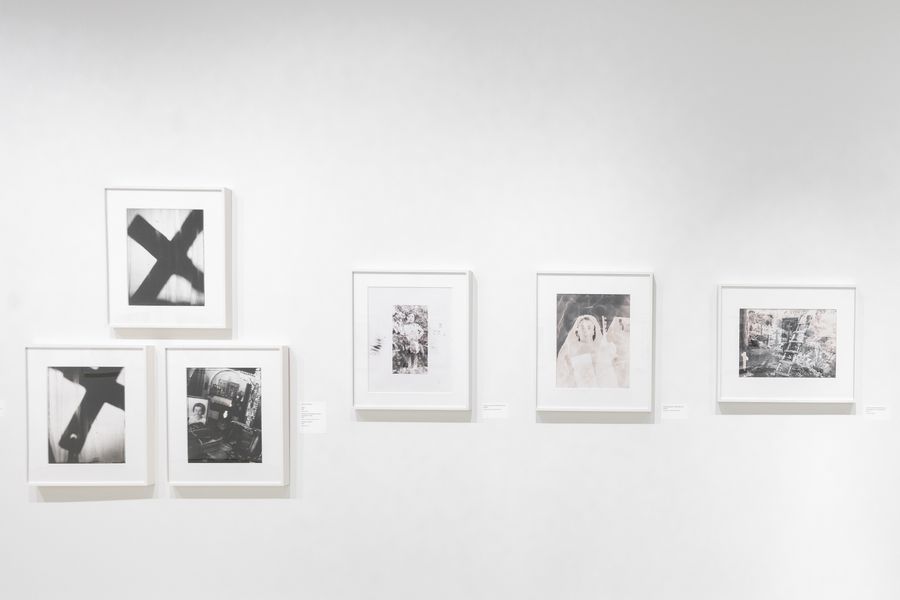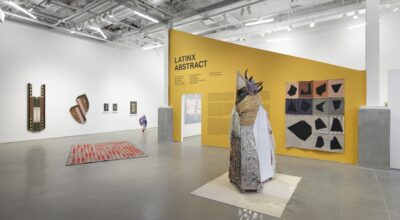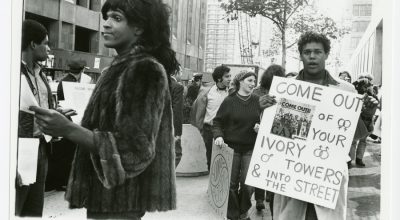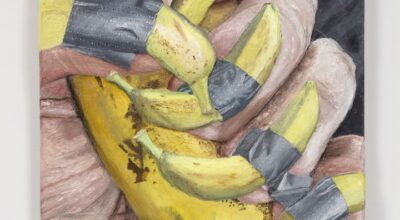
ICP PRESENTS FIRST NYC CAREER SURVEY OF MURIEL HASBUN
Tracing Terruño is the first comprehensivecareer survey in New York City of multidisciplinary artist, educator, and advocate for Central American culture and history, Muriel Hasbun (b. 1961), curated by Elisabeth Sherman, Senior Curator and Director of Exhibitions and Collections at the International Center of Photography (ICP).
Over the course of her career, Hasbun has developed a uniquely poetic and abstracted sensibility that she employs to explore identity and memory, using her personal story of migration from El Salvador to the United States to examine collective histories through photography, video, and installation, from her earliest work in the late 1980s to the present.
The exhibition includes nearly 80 works from throughout her career, some never exhibited. Its title, Tracing Terruño, emphasizes the various ways in which Hasbun has reflected on the interconnected ideas of home, geography, borders, and place over her 35 years of practice.
“For more than 30 years, Muriel Hasbun has been making work that is poetic and personal, political and historical, inviting us into her family’s unique story while charting forces of totalitarianism and xenophobia that have shaped our current world,” says Elisabeth Sherman.

Is it possible to trace our journey through a visual record of the land’s pulses? Can we metaphorically mark our personal and cultural legacies onto the land and in the process make it our “terruño” and diasporic homeland? Can we repair misrepresentation and erasure?
Muriel Hasbun
Photographing in an era of mass migration
Muriel Hasbun, a descendant of Salvadoran and Palestinian Christians on her paternal side and Polish and French Jews on her maternal side, grew up in El Salvador. In this era of mass migration, Tracing Terruño reflects upon one family’s experience with dislocation throughout the twentieth century, urgently examining the lasting effects of war and genocide across generations.
Confronting a family history marked by exile, loss, and migration, Hasbun embarked on her own journey in 1979, departing from her home country at the onset of the Salvadoran Civil War. Her path led her to France and subsequently to the United States, where she pursued studies and established herself in Washington, D.C. Since then, she has dedicated her efforts to her roles as an artist and a professor of photography.
«The Palestinian desert and Eastern European ash sift, shift and blend in the volcanic sands of El Salvador, to form the texture of the path on which I define and express my experience,» says Muriel Hasbun.
Tracing Terruño showcases a diverse array of Hasbun’s series, spanning from her earliest photographic explorations in 1988 to recent experiments with chemigrams on expired photographic papers. The exhibition encompasses the entirety of the two-part series, Santos y sombras / Saints and Shadows (1990–97), Hasbun’s first major body of work. Employing negatives of archival family documents and her personal photographs, the artist intricately layers images to delve into the historical narratives of both sides of her family.
While Todos los santos / All the Saints delves into Hasbun’s paternal lineage and her personal experiences growing up immersed in Catholicism, ¿Sólo una sombra? (Only a Shadow?) traces the experiences of her maternal family from Poland to France before and during WWII. This series skillfully intertwines fading memories with their profound impact on the present, offering a poignant exploration of historical narratives and their resonance in contemporary times.
«Originally, Hasbun developed a series about her maternal family’s experience of surviving the Holocaust known as Only a Shadow?, and later began a series devoted to her Palestinian paternal side in All the Saints. But as she worked on both sides of her family, she realized how they couldn’t be separate entities. They represented who she was as a whole and reconciled her ancestors’ experiences of migration. She therefore merged both projects (Only a Shadow? and All the Saints) into Saints and Shadows,» writes Tatiana Reinoza [1].
Also on view are the series X post facto (équis anónimo) (2009–13), which Hasbun initiated upon discovering her father’s archive of x-rays from his dental practice after his passing. Through the act of printing these medical records, she intentionally removes them from their original context, transforming the images into landscapes and abstractions. In doing so, she unlocks their metaphoric potential, inviting viewers to perceive these once clinical records in a new, expressive light.



I really began investigating things that had been silenced in some way either because of a traumatic kind of event, like the Holocaust in my mother’s case, or because of assimilation and prejudice in my father’s case. So Palestinians were not well seen in the 20th century in Latin America, and there’s still a lot of prejudice against Arabs, and on the other hand the way to really survive the Holocaust was to be silent about one’s identity, so that kind of passed on to me, those questions. Through my work, I really try to re-encounter, recreate, and construct the work or the sense of self and identity that in some ways was lost.
Muriel Hasbun
Cultural identity, migration and memory
Works from throughout her career are interspersed through the galleries, reflecting the complex reflections on time and memory that she is continually exploring. Notably featured are selections from her latest series, Pulse: New Cultural Registers / Pulso: Nuevos registros culturales (2020–ongoing), which intricately maps El Salvador by melding art history with seismic records. Additionally, the exhibition includes her 2016 video Scheherazade or (Per)forming the Archive and the multimedia installation Auvergne – Toi et Moi (1996–1998).
“Working with Elisabeth Sherman has sparked retrospection and introspection during the process of bringing works together from different times in my creative life to share with communities in New York and beyond,” says the artist.
The exhibition is complemented by an artist’s zine published by Matarile Ediciones and a slate of public programs, including events that relate to Hasbun’s work as an educator as well as conversations about photography and representation.
Among these activities is a conversation between Hasbun and documentary photographer Susan Meiselas, exploring their work in El Salvador, their positions as educators, and their leadership roles in organizations advocating for the transformative potential of photography and art practice.

[1] Dr. Tatiana Reinoza, «Muriel Hasbun, Todos los santos (Volcán de Izalco, amén),» in Smarthistory, November 30, 2023, accessed December 22, 2023, https://smarthistory.org/muriel-hasbun-todos-santos-volcan-izalco-amen/.
MURIEL HASBUN: TRACING TERRUÑO
International Center of Photography (ICP), 79 Essex Street, New York, NY
Sep 29, 2023 – Jan 08, 2024
También te puede interesar
TWO EXHIBITIONS HIGHLIGHT LATINX ARTISTS’ ABSTRACT APPROACH
Two groundbreaking exhibitions currently on view in New York assert the enduring legacy of abstraction among Latinx artists: “Latinx Abstract” at BRIC, curated by Elizabeth Ferrer, and “XX”, at the Manhattan-based LatchKey Gallery. Both...
Art After Stonewall, 1969–1989
Coinciding with the 50th anniversary of the uprisings, "Art after Stonewall, 1969–1989" is a long-awaited and groundbreaking survey that features over 200 works of art and related visual materials exploring the impact of the...
GINA BEAVERS: WORLD WAR ME
Drawing on images taken from Instagram, YouTube, image databases, and other online sources, Gina Beavers creates thick, tactile paintings that capture, in deeply visceral ways, the curated and often superficial nature of our digital...



